Build Strong Core Without Straining Your Back: The Real Secret
Share
Build Strong Core Without Straining Your Back: The Real Secret
Intro: Why Core Training Often Leads to Back Pain
Ever wrapped up a set of crunches only to feel your lower back screaming louder than your abs? You’re not alone—it happens all the time. The problem is that chasing a sculpted six-pack the wrong way can overload your lumbar spine, strain connective tissues, and ignore the deeper stabilizers your body needs. The truth is, you can build strong core muscles that protect your spine, enhance posture, and prevent injury—without suffering back pain. Stick with me as I break down the science, clear up the myths, and show you how the Adjustable Abdominal Strength Trainer can help you train smarter and finally build strong core strength safely and effectively.
Understanding Core vs. Abs — What’s the Difference?
Let’s clear this up: when people say “abs,” they usually mean the front-of-body six-pack. But the core is a system. It includes your transverse abdominis (deep corset-like wrap), internal and external obliques (side supports), multifidus and erectors (lower back stabilizers), and even pelvic and hip muscles. A well-rounded core means better spinal alignment, improved balance, and efficient movement in everyday activities. Focusing only on the rectus abdominis (the outer “six-pack”) is like strengthening one strand of rope while ignoring the others—it won’t hold much.
Common Mistakes That Strain Your Back During Ab Workouts
Relying Too Much on Crunches
Crunches can activate hip flexors more than the actual abs, inadvertently pulling on the lumbar spine and stressing it. Execution matters more than repetition—focus on movement control, not just doing high volumes.
Ignoring Proper Form and Breathing
Holding your breath or rushing through reps disrupts spinal stability. Poor form can mean ear, shoulder, and pelvis all move together—placing load on structures not designed for it. Breathe, brace your core, and move mindfully.
Overtraining Without Recovery
Training your core daily might feel productive, but without rest, even the sturdiest support structure weakens. Overtraining increases inflammation, soreness, and risk of injury—especially in the fascia and spinal joints.
The Secret to Building a Strong Core Without Injury
Focus on Form, Not Reps
“A thousand good reps beat ten thousand sloppy ones.” Precision gives you safe activation of deeper muscles like the transverse abdominis and multifidus—muscles that protect your spine from shear forces.
Engage the Entire Core
Go beyond sit-ups. Include anti-extension (planks), anti-rotation (pallof presses or oblique-tilt moves), and anti-flexion (dead bug patterns)—all supporting spinal integrity, not just visibility.
Use Supportive Equipment Like the Adjustable Ab Trainer
This is where smart gear enters the game. The Adjustable Abdominal Strength Trainer is built to support alignment and control, reducing lumbar load while enabling you to target your core effectively. With guided movement paths and resistance adjustments, it's ideal for maintaining form—even when fatigue sets in. If you want to train smarter, not harder, this trainer helps you stay injury-free while progressing your strength safely. Check out the Adjustable Abdominal Strength Trainer here
Safe & Effective Core Workout Routine
Here's a balanced, equipment-supported circuit that prioritizes form and spinal safety. Ideal for home workouts, using the Adjustable Ab Trainer.
Warm-Up (5 minutes)
- Cat-Cow stretches, torso twists, gentle hip tilts, and leg raises to prepare your core.
Circuit (Complete 2–3 rounds)
- Supported Leg Raises (using trainer) — 10–12 controlled reps
- Ab Roll-Ins or Pull-Ins (trainer-guided) — 10–12 reps
- Oblique Twists — 8–10 reps per side
- Dead Bug Variation (floor-based, slow and controlled) — 8 reps per side
- Plank or Modified Plank with Trainer Support — Hold for 30–45 seconds
Cooldown (5 minutes)
- Child’s pose, knee-to-chest stretch, gentle lower-back twists, and deep breathing.
Progression Tips:
- Beginner: Use lighter resistance, focus on form.
- Intermediate: Add more reps or slightly increase resistance.
- Advanced: Slow tempo, even lighter resistance with precision for maximal core engagement.
Lifestyle Habits That Strengthen Your Core Naturally
Posture During Work and Daily Movements
Try pulling your navel gently toward your spine while sitting. Engage your glutes while standing. These micro-habits keep your deep core activated throughout the day, not just during your workouts.
Adding Core Engagement in Daily Activities
Instead of carrying items with slouched shoulders, brace your core and move with intention—this trains your stabilizers without a formal workout.
Importance of Stretching and Mobility Work
Releasing tight hip flexors and hamstrings can ease spinal strain, aid in pelvic alignment, and enhance your ability to use your core properly. Include mobility cues like foam rolling, hip flexor stretches, or dynamic warm-ups.
Who Benefits Most from Back-Safe Core Training?
This approach is a game-changer for:
- Busy Professionals: Optimize core strength without risking downtime from pain.
- Beginners: Steady, scalable workouts that feel level-appropriate and safe.
- Older Adults or Individuals with Past Back Issues: Low-impact, controlled training keeps you strong without aggravating injuries.
- Everyone Seeking Functional Strength: Real-life movement requires stability, not just looks.
Whether your fitness goal is six-pack ambition or everyday resilience, this method keeps your spine safe and your core strong.
Conclusion: Stronger Core, Healthier Back
Let’s bring it full circle—safe core training isn’t about punishing crunches or endless rep chains. It’s about building structure, not strain. Quality movement, full engagement, and smart equipment like the Adjustable Abdominal Strength Trainer help you progress confidently, not carelessly. You deserve strength without compromise—injury-free, more capable, and more aligned than ever.
Invest in your strength—and your back—with this smart, supportive option:
Adjustable Abdominal Strength Trainer – Build Your Core Safely
Train smart, train safe, and let your core carry you forward—with strength, control, and no strain.
